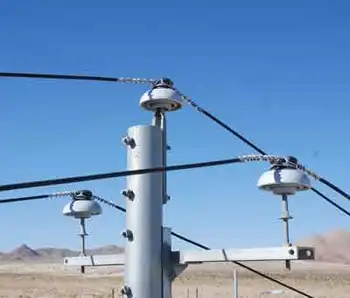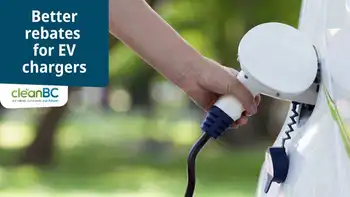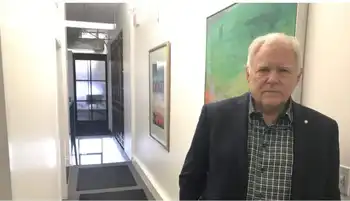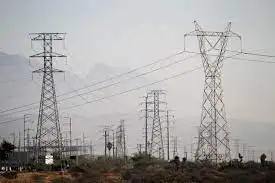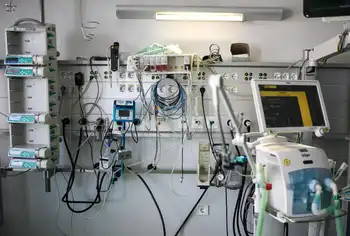Customers may pay price for utility's violations
By Milwaukee Journal Sentinel
Arc Flash Training CSA Z462 - Electrical Safety Essentials
Our customized live online or in‑person group training can be delivered to your staff at your location.

- Live Online
- 6 hours Instructor-led
- Group Training Available
The utility agreed last year to spend $600 million to settle Environmental Protection Agency charges that it violated the Clean Air Act by delaying the installation of pollution controls.
The new Wisconsin Energy proposal, which could be introduced in the Legislature by week's end, would create an environmental trust financing program that could qualify for low-interest loans to pay for the plant repairs. The charge on customers' bills would then be used to pay the interest on the loans.
The idea rekindles a controversial question posed last year by state Attorney General Peg Lautenschlager and groups that represent industries and consumers: Should the utility's electricity customers or its shareholders pay for the upgrades needed to settle the Clean Air Act charges?
"Here we have a situation where Wisconsin Energy is being accused of failing to comply with the law and that they were negligent in the operation of their plants so that they were polluting more than they should have been," said Charlie Higley, executive director of the Citizens' Utility Board. "That's management making a mistake, not the ratepayers. In that case the shareholders should take the brunt of making the improvements to comply with the law."
Wisconsin Energy executives emphasized that the utility's proposal wouldn't automatically result in the charge being placed on customers' bills. If enacted by the Legislature, the utility plan would give the state Public Service Commission the authority to determine whether costs of a given environmental upgrade would be appropriate for ratepayers to pay, said Larry Salustro, senior vice president and general counsel of Wisconsin Energy.
How much utility customers would have to pay remains unclear, but Wisconsin Energy executives say the proposal is actually designed to save customers money, compared with the traditional rate-based method of utility financing.
If, for example, the utility borrowed $1 billion, interest to pay off the loan plus funds to generate a rate of return -- or profit -- for the utility would amount to $150 million to $170 million a year in extra costs borne by ratepayers. But under the environmental trust fund, the utility would earn no rate of return, and annual costs to pay off the loan would be limited to $70 million a year in interest costs, said Allen Leverett, Wisconsin Energy chief financial officer.
Wisconsin Energy and other utilities would benefit from the proposal by not having to borrow as much money in traditional financing mechanisms, Salustro said. Wisconsin Energy, for example, is already counting on borrowing to cover much of the cost of building new power plants, he and Leverett said.
The proposal is being circulated at a time that utilities across the state and the country are selling assets or cutting dividends as a way to reduce debt and keep their balance sheets stable and their investors happy. Salustro said it's premature to project how much money the utility would seek via the proposed trust fund, and the actual charge customers would pay isn't clear. And he emphasized that creation of the environmental trust fund wouldn't necessarily be linked to the EPA settlement. Funds would be available for any utility in the state looking for ways to finance environmental upgrades to plants because of changing regulations governing pollutants such as sulfur dioxide, nitrogen oxide and mercury.
Aging coal-fired plants, while providing a relatively inexpensive way to generate electricity, are the biggest source of emissions of these pollutants relative to other forms of generating power.
The pollutants' role in contributing to smog, ozone pollution, asthma and mercury-tainted fish have resulted in stiff opposition from environmental groups and others both to the Wisconsin Energy EPA settlement and the utility's plan to build new coal-fired power plants.
Waiting for details
Though Higley of the Citizens' Utility Board questioned the environmental trust fund plan, representatives of other groups actively involved with state energy policy were circumspect when contacted Tuesday about the proposal.
"The devil's in the details," said Lee Cullen, a Madison energy lawyer who represents the Customers First! coalition of consumer and environmental groups, unions and municipal utilities.
David Benforado, executive director of the Municipal Electric Utilities of Wisconsin, said he would not comment until he has seen details of the proposal.
While not taking a position, Nino Amato of the Wisconsin Industrial Energy Group said: "The general concept has merit to evaluate. It has merit anytime a utility is willing to make improvements and not get a return on it."
But Amato said his group, which represents some of the largest industrial utility customers in the state, will continue to fight to persuade the PSC not to approve the use of ratepayer dollars to fund the EPA settlement.
That settlement remains pending in U.S. District Court in Milwaukee, where the utility and customer and environmental groups are sparring in a back-and-forth exchange of court filings about whether the settlement is in the best interest of Wisconsin's environment and its energy needs.






